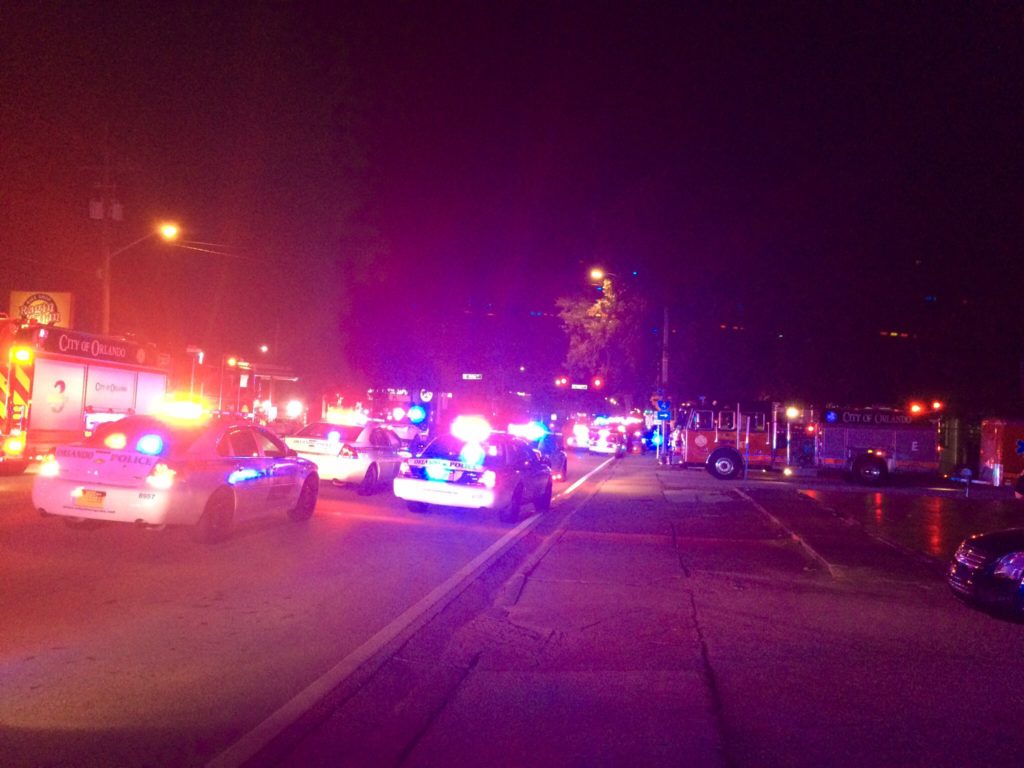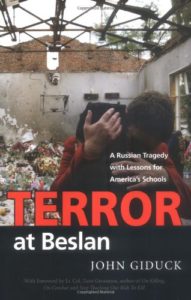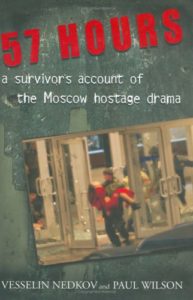Written by: Greg Ellifritz

Last week I wrote a post about the Pulse nightclub shooting in Orlando Florida. In it, I outlined the story and provided some guidance that would help the average citizen survive a similar homicidal killing spree. Go back and read it before you move on to the second part below.
I have some more advice for any police officers who may be responding to a similar murderous rampage. Keep in mind that we still have very few facts about this shooting. My advice pertains to the narrative we currently know and understand. As more information is released, my advice and recommendations may change.
With that said, here are some lessons learned from the police response at the Pulse nightclub:
1) Practice is important. Research shows that the frequency of practice is more important to skills maintenance than the total amount of practice. That means you will get better results shooting 100 rounds every week for a month than you would firing 400 rounds in a single monthly session.
This is a huge problem area for cops. Between side jobs, court subpoenas, and family duties, most cops don’t make the time to regularly practice. That has to change. The shooter in the Orlando incident practiced with both his rifle and pistol two days before his killing spree. When is the last time you practiced? No police departments provide officers with enough time or practice ammo to facilitate mastery with a firearm. I would suggest that firing 50 rounds a month with every one of your carry weapons would be an absolute MINIMUM amount of range time an officer needs for high performance. I shoot at least weekly and fire between 5000 and 6000 rounds a year. To get better, I actually need to work even harder than this.
Are you shooting at least monthly? If not, you won’t be prepared for an incident like this.
2) More head shots. Cops don’t practice taking head shots nearly as often as they should. Today’s active killers are more commonly integrating explosive vests/belts into their attack planning. They are also more likely than ever to be wearing body armor. Both of these observations hold true for the Pulse shooting. The shooter in this case claimed that he was wearing a bomb vest (although it was later found that he had lied). He also attempted to buy military style (Level Three) hard armor plates capable of stopping rifle rounds, but the store wouldn’t sell them to him.
If you shoot center mass against a killer/terrorist with a bomb vest, your bullet will likely detonate the explosive and kill you. If you shoot center mass against a target with quality armor, your shots will be ineffective. You have to practice your head shots and train yourself to take them if you find yourself in an active killer event. What’s the farthest distance you can you guarantee a perfect head shot? If you don’t know the answer to that question, you aren’t prepared to take on a modern-day active killer.
3) We must engage more quickly. The information about why police waited almost three hours to assault the building has strangely not been released. We know that the killer fired some shots outside the club and exchanged rounds with a cop working an off-duty security detail at the bar’s parking lot. It appears that the special duty cop chose not to enter the club when the killer went inside. I don’t know why he didn’t. There is speculation that he fired all of his ammunition in the gunfight outside. If that’s the case, I could understand not making entry. In my opinion, even if he only had a few rounds left, he should have pursued the killer into the club. Do you carry a backup gun in the event that you run out of ammo with your primary? If not, you are a fool.
We also know that two patrol/SWAT cops arrived on scene about a minute after the special duty officer called for assistance. It appears that they (correctly) made entry and engaged the killer as well. The officers’ quick entry caused the gunman to retreat to the bathroom with hostages. At some point in time the first two officers on the scene left the building. I think that was a huge mistake.
In this kind of scenario, the only way I would pull out is if I was either out of ammunition or was absolutely convinced that the killer has a bomb he is about to detonate. Neither of those events were reported. So why did the cops pull out? I hope that question is answered soon.
In this situation, if I still had ammo and was uninjured, I would stay inside the building. Once you retreat, you lose eyes on the killer’s location and will give the shooter better mobility from which he can kill more hostages or ambush responding cops.
Holding cover on the killer’s location allows other officers the ability to enter the building without getting shot. It also provides “eyes” inside to better coordinate an evacuation effort. Nothing but bad things happen when you give up hard-fought terrain in a spot like this. Don’t give up ground you have taken in an active killer attack!
When the cops left, that gave the killer an opportunity to leave his shelter, kill 29 people in the other bathroom, and finish up some of the wounded on the dance floor. He couldn’t have done that so easily if the cops had held their initial positions.
This article clearly describes how the cops were on scene and just outside the door as the killer was still actively firing shots. Not good. The cops should have made immediate entry rather than waiting three hours. Undoubtedly, many of the casualties bled to death during that three hour delay. Making entry, while dangerous, is a much better option than letting innocent victims die.
4) We must understand the difference between a “normal” hostage situation and one that is concurrent with an active killer event. The tactics that police utilize should not be the same for both kinds of crimes.
In a “routine” hostage situation, the kidnapper wants to negotiate for something. Generally, police can convince him to give up if they are given enough time to talk. In an active killer hostage scenario, the killers DO NOT want to negotiate. They use negotiation to buy more time to get better media exposure and to fortify their surroundings before the inevitable police entry. Negotiation in active killer hostage events just leads to more dead bodies.
The problem is that we haven’t seen many active killings with a kidnapping component here in the USA. Most cops don’t study historical terrorist attacks to be able to understand what the active killer actually wants. He wants a higher body count! And if you delay entry to negotiate, the shooter will kill more people.
One example of an active killer using this tactic in the USA is the Amish School shooting in Nickel Mines, Pennsylvania. The killer talked to cops as he boarded up the school’s windows, chained up the door, and immobilized the students by chaining and handcuffing them to a piece of lumber into which he had driven metal eye hooks every foot of its length. While negotiating, he turned the school into a fortress, which seriously hindered officers’ rescue attempts when the killer started shooting.
In Russia, we have seen the same tactics deployed. Remember the Beslan school massacre? Chechen terrorists negotiated with police and the military for more than two days. They never once made any demands. They didn’t really want anything other than the intense media coverage they were getting during the long negotiation times. They also used the time to set up armored nests for belt fed machine guns, to kill any of the hostages who looked like they might resist, and to rig the ceiling of the gymnasium where the hostages were kept with plastic explosives to deter police entry. That “negotiation” led to the death of 385 people.
If you aren’t up on the Beslan school attack, you need to do some reading. I recommend Beslan by Timothy Phillips and Terror at Beslan by John Giduck.
In addition to the Beslan and Nickel Mines attacks, the Chechens also used the same “negotiation for fortification” tactic at the Nord Ost theater. Over a three-day period, terrorists negotiated with the Russian government and while doing so, placed explosive charges and suicide bombers around the hostages. They also killed any male or person in power who looked like they might resist. “Negotiation for fortification” in this incident created 170 fatalities and 700 more injuries. Read 57 Hours by Vesselin Nedkov for more information about Nord Ost.
Here’s the problem: most police commanders know nothing about these historic events. It’s tough to understand what’s going on when you aren’t aware of all of the tactics that the terrorists use. That’s the fault of every cop who chooses not to obtain the information he needs to do his job correctly. If more cops spent as much time studying active killer tactics as they do watching football on TV, there would likely be a whole lot fewer dead bodies right now.
I am just guessing here, but I think the police incident commanders thought they were dealing with a normal hostage barricade situation, something that probably happens at least monthly in a city the size of Orlando. The tactics for handling those situations (calm things down and talk) are diametrically opposite of the tactics that should be used in an active killer barricade. Any delay to the inevitable breach in these events leads to more lives being lost. Our cops need to better understand these situations to make better decisions. Waiting three hours while citizens are being killed and rapidly bleeding to death inside the nightclub is unacceptable. We cops are telling people that we’ve changed since Columbine, but how is this really any different than that police failure? It looks to me like the cops dropped the ball…although I’m certainly willing to change that assessment if or when additional information is released.
5) Cops need to cross train with medics and fire more often. Do you know how to properly carry or drag a seriously injured person without hurting yourself or making your patient’s injuries worse? Most cops don’t; yet it was the cops who carried out most of the wounded. One victim described how his cop rescuer dragged him through piles of broken glass, causing lots of pain and significantly more injury than the patient originally had.
I have nothing but respect for the cops who risked their lives to pull the injured to safety. Shouldn’t we give our heroic cops the training they need to perform better in crisis situations like this? It would be great if every police department could do a couple hours of training with fire/rescue personnel to learn proper carry and drag techniques.
6) Low light tactics, team tactics, and “fire and maneuver” skills need to be taught to police. Very few officers do much training (if any at all) with a flashlight. If you are trying to find an active killer in a dark night club without getting shot, you are going to need exceptional low light tactics. Some departments occasionally have officers shoot while holding flashlights. That’s great. In addition to the relatively simple act of shooting with a light, cops need to know how to effectively SEARCH using a light. That’s where the majority of police training breaks down.
Most cops also are sadly lacking in team tactics and “bounding overwatch” style tactics. I would guess that fewer than 5% of police officers know these very basic battlefield survival skills. That needs to change if we want successful outcomes in active killer events that are becoming exponentially more complex and deadly.
7) Watch what you post on Facebook. The FBI reported that the Orlando killer made “frequent” Facebook searches looking into local police, sheriff, and FBI related activity in the 30 days prior to the shooting. I may be paranoid, but I would suggest scrubbing your profile of anything that ties you to the agency you work for. I would also avoid frequently “liking” any activity on your agency Facebook page.
You probably don’t want to place yourself at the top of your local jihadist’s kill list. Be the gray man. Get all your uniform pictures off of social media. Get rid of your FOP license plate placards and your “thin blue line” bumper stickers. Cops are a big target for Islamist extremists. Killing a cop gets LOTS of media attention and that’s what the terrorists want. Don’t let your pride (or narcissism) contribute to your death.
8) We need better ways to get real time intelligence. Victims here couldn’t speak when they were playing dead, but they were able to text, send emails, and post on social media sites. With our citizens so enamored with their smart phones, police agencies could benefit if they provided a convenient medium for their residents to transmit important information in real time. The medium must be constantly monitored and posts should NOT be made public. The killer in the Pulse shooting was checking Facebook as he shot people. He was looking to see if news of his crime was “trending.” We don’t want a public page where the killers can read all the intel provided by their victims.
Think about what could happen if police were to create a private crisis notification page on Facebook or Twitter. People could bookmark the site and send real-time intelligence information to dispatchers and officers through the link. Having video of the locations of wounded people and/or the killer in the nightclub would be tremendously valuable to the SWAT team and responding officers. Hell, just having a 911-type channel for text messages might have been a game-changer in a situation like this.
Cops are behind the curve in the area of social media and technology. Departments need to embrace this technology so they can get real-time intelligence from their residents.
I have a few more things to say, but this article is too long already. I’ll add those other tips to a new article whenever the FBI and Orlando police reveal more details of the shootings.
Stay dangerous out there.
Some of the above links (from Amazon.com) are affiliate links. As an Amazon associate I earn a small percentage of the sale price from qualifying purchases.



